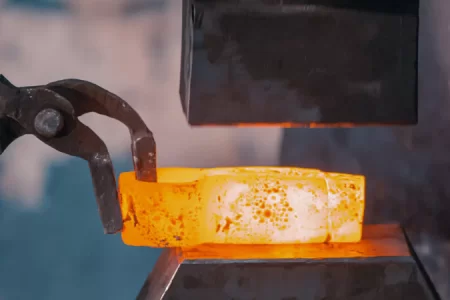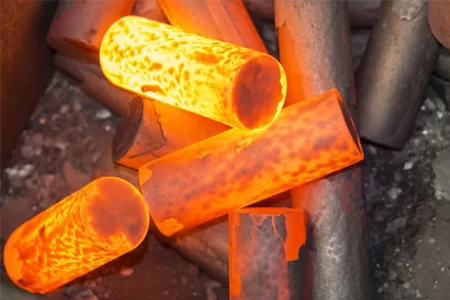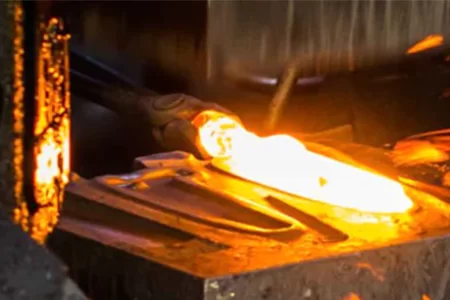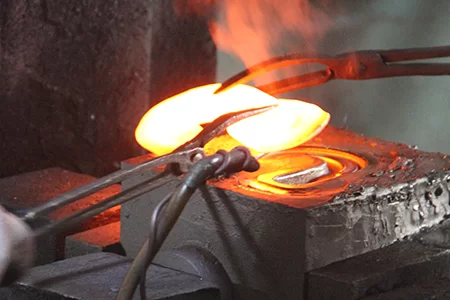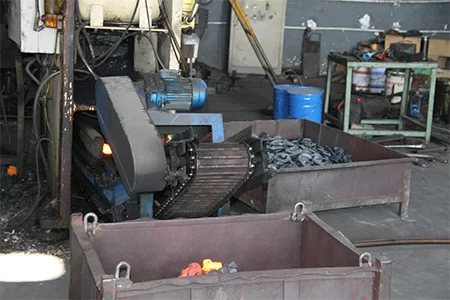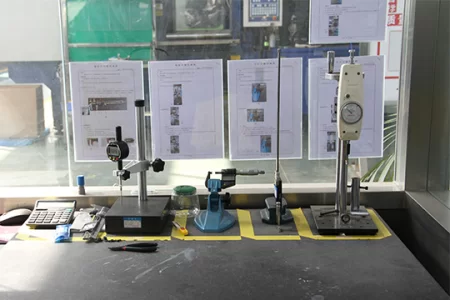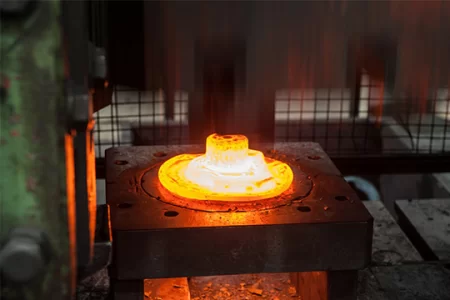By sharing knowledge, experience and views in the field of forging technology, we help you understand, learn and apply relevant technologies.

Hulk Metal Forging Technology
Share technical experience
-
Home>
-
Blog>
-
Technology>
How to Find an OEM Metal Forging Factory?

In today’s competitive manufacturing landscape, selecting the right OEM (Original Equipment Manufacturer) metal forging partner is critical for ensuring product performance, cost efficiency, and on-time delivery. Whether you require high-volume hot-forged components or complex, precision-machined parts, a strategic forging partner can make the difference between success and setback. This guide provides a comprehensive, step-by-step approach to identifying and evaluating OEM metal forging factories, empowering you to make informed decisions that optimize quality, lead times, and total cost of ownership.
Understanding OEM Metal Forging
What “OEM Forging” Really Means
OEM forging refers to the process by which a forging factory produces custom-designed metal components directly for an equipment manufacturer. Unlike distributors or brokers, an OEM forging partner handles everything from die design and material procurement through final finishing, ensuring full traceability, consistent quality, and adherence to your specifications.
Hot Forging vs. Cold Forging: Key Differences
Hot Forging: Involves heating metal above its recrystallization temperature to improve ductility and shape complex profiles with lower press loads. Ideal for large, structurally demanding parts such as shafts, crankshafts, and heavy hooks.
Cold Forging: Conducted at or near room temperature, yielding superior surface finish and tight dimensional tolerances. Best for high-precision, small- to medium-sized components like fasteners and fittings.
Defining Your Requirements
Material Types and Grades
Identify the precise alloy grade and material properties you need. Common choices include:
Carbon Steel: Cost-effective, good strength, widely used in general-purpose applications.
Alloy Steel: Enhanced mechanical properties for high-stress environments (e.g., chromium-molybdenum steels).
Stainless Steel: Corrosion resistance for harsh or hygienic applications.
Part Complexity, Size, and Tolerances
Define part geometry, weight, and dimensional tolerances upfront. Complex shapes with deep ribs or thin walls may require specialized forging presses and advanced die design. Tolerance requirements (e.g., ±0.1 mm vs. ±1 mm) directly affect process choice, scrap rates, and inspection methods.
Annual Volume and Scalability
Estimate your current and projected annual volume. High-volume runs (tens of thousands per year) justify investment in dedicated tooling and automated finishing, while low-volume or prototype orders may be better served by adjustable dies or charge-per-piece models.
Evaluating Factory Capabilities
Production Technologies
Open-Die Forging: Flexible shaping for large, simple parts; lower tooling costs but higher labor input.
Closed-Die (Impression-Die) Forging: Precise contours and repeatability; excellent for medium to high volumes.
Rotary Forging (Orbital/Swaging): Efficient for rings, flanges, and disks; minimal material waste.
Equipment and Capacity
Assess press capacity (tonnage), die life, and finishing equipment:
Press Tonnage: Ensure presses can handle your part’s forging force requirements.
CNC Machining: In-house finishing capability reduces lead times and logistics.
Heat Treatment: On-site furnaces enable rapid turnaround for normalized, quenched, or tempered parts.
In-House vs. Outsourced Processes
A vertically integrated factory offers tighter control and shorter lead times. Outsourcing key steps like machining, shot blasting, or plating can introduce scheduling variability and quality risks. Prioritize partners that maintain critical processes under one roof.
Quality Assurance & Certifications
Industry Standards
Look for certifications such as ISO 9001 (quality management), IATF 16949 (automotive), or AS 9100 (aerospace). These demonstrate structured processes and continual improvement.
On-Site Testing Capabilities
Best-in-class OEM forgers perform:
Ultrasonic and Magnetic Particle Inspection for internal defects.
Metallographic Analysis to verify grain structure and recrystallization.
Mechanical Testing (tensile, Charpy impact) to confirm strength and toughness.
Traceability and Documentation
Ensure each batch of forgings comes with full material certificates (e.g., EN 10204 3.1), heat numbers, and inspection reports. This level of documentation is essential for regulated industries and critical applications.
Supply Chain & Logistics
Raw-Material Sourcing and Storage
A reliable OEM forging factory secures multiple certified steel mills as raw-material suppliers to mitigate disruptions. Proper warehouse conditions (humidity control, first-in/first-out) preserve material integrity.
Lead Times and Inventory Management
Confirm typical lead times—from tooling design to first-article inspection (FAI) and mass production. Partners offering Vendor-Managed Inventory (VMI) or Kanban replenishment can dramatically shorten your supply chain.
Packaging, Export Compliance, and Freight
Specialized export packaging (e.g., anti-rust coatings, sea-worthy crates) protects forged parts in transit. Evaluate the factory’s experience with your destination country’s import regulations, customs clearance, and freight options (air vs. sea vs. rail).
Assessing Cost vs. Value
Transparent Quoting Practices
Look for detailed quotations that break out tooling costs (die design, die manufacturing), per-piece forging costs, finishing, and overhead. Beware of “all-in-one” quotes lacking clarity on fixed vs. variable expenses.
Total Cost of Ownership
Consider scrap rates, rework, inspection costs, and warranty service expenses. A lower per-piece price may hide high scrap percentages or post-shipment replacement charges.
Negotiation Tips and Volume Discounts
Tooling Amortization: Spread die costs across your projected volume to negotiate better per-piece pricing.
Long-Term Contracts: Commit to multi-year purchase agreements in exchange for reduced rates.
Loyalty Programs: Some OEM forgers reward repeat business with tiered discounts or expedited scheduling.
Factory Audits & Visits
What to Look For
During a site audit, observe shop organization, 5S implementation, and maintenance schedules. A clean, orderly shop floor is often correlated with rigorous quality control.
Key Questions to Ask
How many die sets are in use, and what is their average life?
What is your on-time delivery rate?
Can you provide recent performance metrics (scrap rate, customer returns)?
Red Flags and Warning Signs
Lack of documented procedures or traceability.
Frequent machine breakdowns causing missed deadlines.
Reluctance to share audit results or third-party inspection reports.
Sample Runs & Prototyping
First-Article Inspection (FAI) Process
A thorough FAI includes dimensional measurement, material verification, and functional testing. Ensure your partner provides a formal FAI report before authorizing mass production.
Iterating Dies and Design Adjustments
Collaborate on die modifications to address flash removal, die wear, or part fill issues. Agile forgers can iterate quickly to refine tolerances and surface finish.
Validating Real-World Performance
Subject prototypes to real operating conditions—load testing, fatigue cycling, or corrosion exposure—to verify that forged parts meet end-use requirements.
After-Sales Support & Long-Term Partnership
Warranty and Replacement Policies
Clarify warranty terms for material defects or dimensional non-conformance. Fast replacement or rework turnaround is vital for maintaining your production schedules.
Continuous Improvement Programs
Top OEM forgers conduct periodic business reviews and process audits, proposing lean initiatives, Six Sigma projects, or joint value-engineering workshops.
Building a Strategic Supplier Relationship
Treat your supplier as a partner. Share forecasts, design roadmaps, and market insights to foster collaboration, reduce risks, and unlock innovation opportunities.
Choosing an OEM metal forging factory is a strategic decision that impacts product quality, cost efficiency, and time-to-market. Use the checklist below as a final reference:
Define material and tolerance requirements
Verify production technologies and in-house capabilities
Confirm certifications and testing procedures
Scrutinize lead times, logistics, and cost structures
Conduct site audits and review sample runs
Establish clear after-sales support and partnership programs
At HULK Metal, we combine state-of-the-art hot forging presses, in-house CNC machining, and rigorous QA systems (ISO 9001, ISO14001,ISO45001) to deliver high-strength, precision-forged components worldwide. Our turnkey approach—from die engineering to heat treatment and finishing—ensures minimal lead times and maximum peace of mind.
Ready to partner with a trusted OEM metal forging expert? Contact our team today to discuss your project requirements and receive a transparent, no-obligation quote. Let HULK Metal be the foundation of your next great product.
Article Navigation
Article Navigation
Industries
Foundries
-

July.01, 2024
Difference between hot forging and cold forging
READ MORE
-

June.27, 2024
What are the advantages and disadvantages of the hot forging process?
READ MORE
-

January.18, 2024
Forging: What Is It? What Are The Different Types of Hot Forging?
READ MORE
-

April.30, 2025
A step-by-step guide to ordering forged steel products
READ MORE
-

April.18, 2025
Closed Die Steel Forgings Deliver Numerous Advantages
READ MORE
-

February.14, 2025
HULK Metal's hot forging quality control
READ MORE
-

January.23, 2025
The difference between forging and casting
READ MORE



